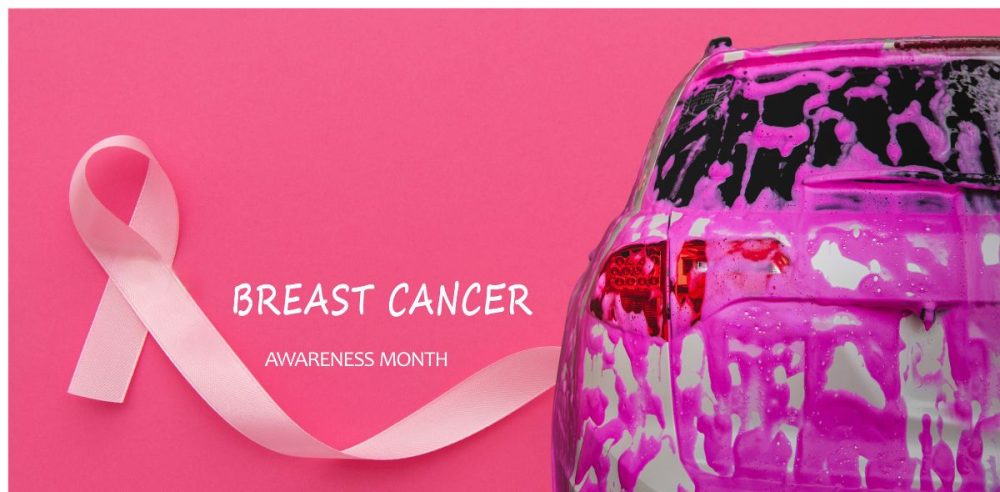It is safe to say that the throes of breast cancer have impacted either you or someone you know.
October is the dedicated month of breast cancer awareness. Although the month inspires and educates many, the disease’s effects on women, men, and children extend well beyond the month of October, pink ribbons, and international marketing campaigns.
The 2024 theme for Breast Cancer Awareness Month is “No one should face breast cancer alone.”
For some, Breast Cancer Awareness Month is a trigger that reminds them of the dreaded diagnosis that changed the trajectory of their life. For others, October is a month of support and encouragement. And there is the middle ground where emotions fluctuate from sorrow to strength.
Whether you choose to observe the month is a personal decision and should remain as such.
Breast cancer awareness started as a week-long initiative in 1985, spearheaded by the American Cancer Society. Over time, the campaign evolved into a month-long observance known as Breast Cancer Awareness Month.
Some people believe that the mission of the American Cancer Society to “improve the lives of people with cancer and their families through advocacy, research, and patient support, to ensure everyone has an opportunity to prevent, detect, treat, and survive cancer” has been diluted or even lost by profitable “pinkwashing” marketing campaigns.
Pinkwashing
“Pinkwashing is not simply pink ribbon promotions, of which there are many; it’s specifically the hypocrisy of companies telling us how much they care about breast cancer while their product or service might increase risk of the disease,” explained Karuna Jaggar, the former executive director of Breast Cancer Action.
Breast Cancer Action introduced Think Before You Pink® in 2002 due to increasing concern about the abundance of pink ribbon products available for purchase from companies without transparency and accountability. Campaigns that engage in pinkwashing may give consumers the impression that they are making a positive impact when, in reality, they could be buying products that perpetuate the issue.
For example, Revlon collaborated with the National Breast Cancer Coalition in 2003 for a promotion featuring pink ribbons on beauty products. These products contained “long-chain parabens and DMDM hydantoin (a chemical that releases formaldehyde),” substances recognized to elevate the likelihood of certain types of cancer.
Revlon eliminated these ingredients from its merchandise in 2014, per Time Magazine.
Pinkwashing can also create a misleading impression that the items being bought are healthier compared to other options.
A study published in May 2024 in the Addictive Behaviors journal revealed that pinkwashed beer advertisements “led to greater brand favorability and perceived healthfulness.”
Statistics in the United States
The American Cancer Society states that breast cancer “accounts for about 30% (or 1 in 3) of all new female cancers each year.”
In 2024, the estimated numbers continue to be alarming:
- About 310,720 new cases of invasive breast cancer will be diagnosed in women.
- About 56,500 new cases of ductal carcinoma in situ (DCIS) will be diagnosed.
- About 42,250 women will die from breast cancer.
Breast cancer can affect individuals of all genders, races, and ethnicities, but certain groups have a higher risk.
“At every age, Black women are more likely to die from breast cancer than any other race or ethnic group,” states the American Cancer Society. Yet, with continued preventative measures, funding, resources, and education, there are now over 4 million breast cancer survivors in the U.S.
Preventing breast cancer cannot be guaranteed, but there are actions that may reduce the risk. These measures can be particularly beneficial for those with specific breast cancer risk factors, like a family history or inherited gene mutations.
Proactive Measures
Several proactive measures can help lower the risk of developing breast cancer, even though many factors are out of your control, and it is a myth to assume if you do everything “right,” that you don’t have to concern yourself with developing breast cancer.
Even still, suggestions to help prevent the disease include maintaining a healthy weight, performing breast self-exams, mammography, engaging in regular physical activity, minimizing or avoiding alcohol consumption, breastfeeding for an extended period after childbirth, seeking genetic counseling to evaluate the risk, considering medications to decrease breast cancer risk, opting for preventive surgery, undergoing close monitoring, and more.
The National Breast Cancer Foundation, Inc., has a new eBook to help individuals diagnosed with breast cancer process the next steps, connect with support, and answer common questions. The eBook is free and can be found here.
Lasting Effects
As we begin Breast Cancer Awareness Month, please keep in mind that the lasting effects on people’s lives who have experienced this disease go far beyond October. Quality-of-life side effects, both mental and physical, often linger.
“[People think that] after you are ‘cured,’ you will return to normal, like you never had cancer,” stated BellasMomToo. This misconception is harmful.
Besides skin cancer, breast cancer is the second most prevalent cancer in women in the United States. Mammograms remain one of the most effective methods for detecting breast cancer at an early stage when it is more manageable to treat, according to the CDC.
The Dallas Express recently reported on the new mandate, which became effective on September 10, ensuring patients with dense breasts receive increased guidance regarding their risks following a mammogram. Read the full story here.


